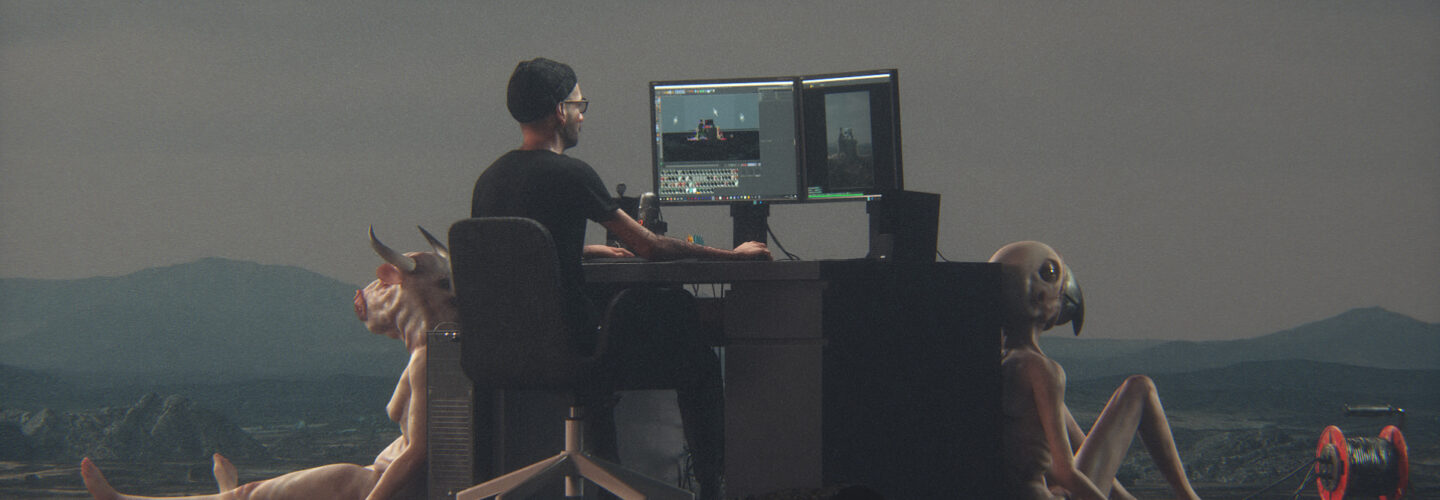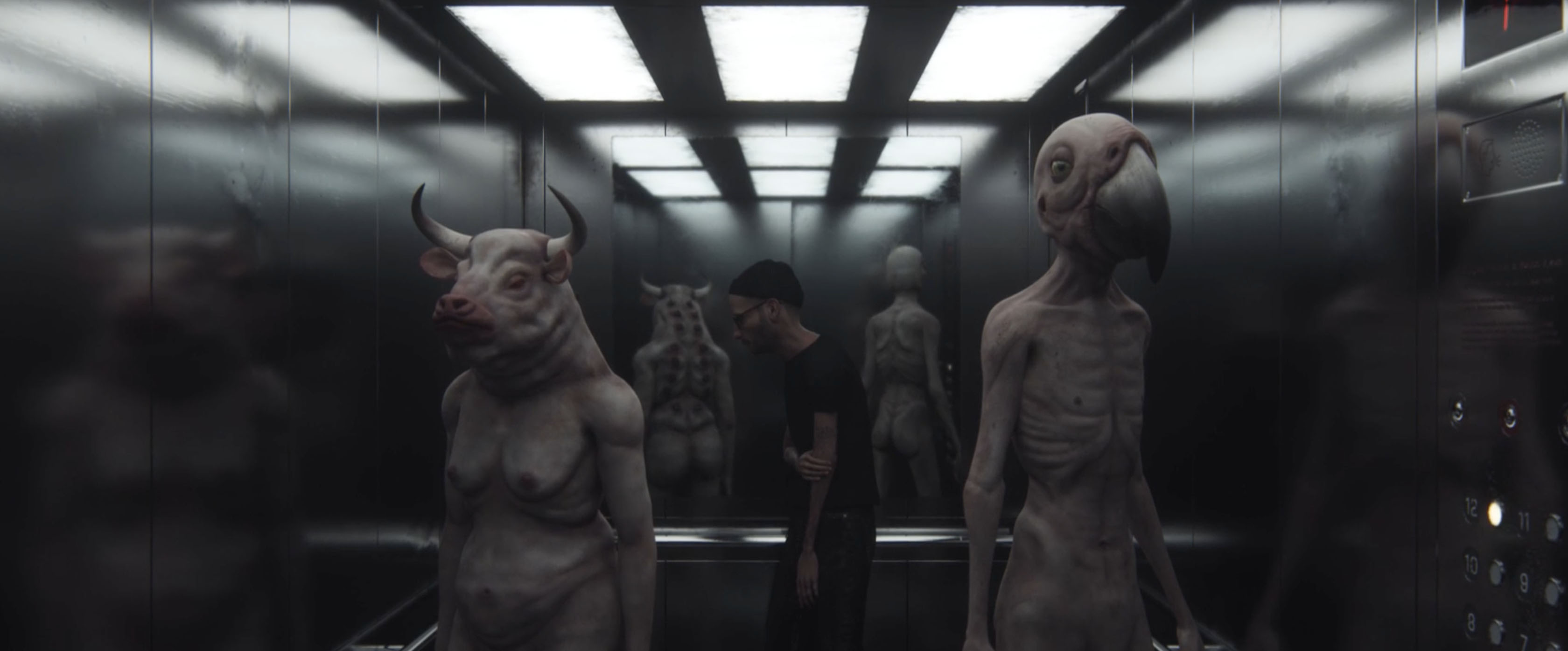
It’s a well known fact that creativity feeds on the anguish of the artist. Rendered in exquisitely realistic surrealism, Sometimes I think about things, and sometimes I get sad. is a deeply personal, dystopian visualisation of Video Artist and Art Director Louis Crevier’s inner demons. Narrated by and featuring a character of the director himself, the 3D animated vignettes which took ten years to complete, form a captivating artefact suspended in time and space – interweaving self-doubt, fear and regret, with just the right amount of ambiguity to make it a hugely compelling piece. The film has a haunting quality and much like a recurring nightmare it seeps into the viewer and lingers in their thoughts long after the credits fade away. DN caught up with Crevier and chatted about working solo, the director’s ever-evolving process, the creative struggles that inspired the short and plenty more.
This is clearly a deeply personal and intimate project, can you tell me what inspired you to make it?
When I began working on these animated formats, close to 10 years ago now, I started from a very ‘free form’ approach, exploring themes and ideas without thinking too much about narrative structure. I was working on these short formats as you would work on a poem, in a sense. There are intentions and emotions there, but you shouldn’t necessarily expect it to tell a precise story.
With time I progressively stepped away from this organic approach, and started working in more conventional ways (storyboarding, animatics, etc.). Looking back, I feel like I lost something on the way. So for this latest short (and the previous one), I made the very conscious choice to go back to my roots and to work in a way where I don’t know where I’m going. To work as chronologically as possible and let the ideas fall into place.
With that in mind, this project didn’t start with a particularly personal angle. The first idea I had was the hourglass series of shots (bathtub/pool/ocean). The passage of time is a theme that I always enjoy exploring, associated here with climate anxiety, and a general sense of doom. At that point I was thinking of the project as these groups of shots about different themes, coming one after the other, possibly even separated by a title card.
There are intentions and emotions there, but you shouldn’t necessarily expect it to tell a precise story.
Around the same time as I was writing these ideas down I started, as a side project, a ‘remake’ of one of the first character animations I made, around 2013, a minotaur character attached to a parachute, fighting against the wind. I had just started working on the character model when I had to travel for work. On the flight back I went through the thought process that now starts the film, and wrote it down.
These ideas ended up fitting together, but as you can see, the scenes were devised completely separately. The film got more and more personal as I went, but I can’t say it was the original intention, it just went in that direction naturally.
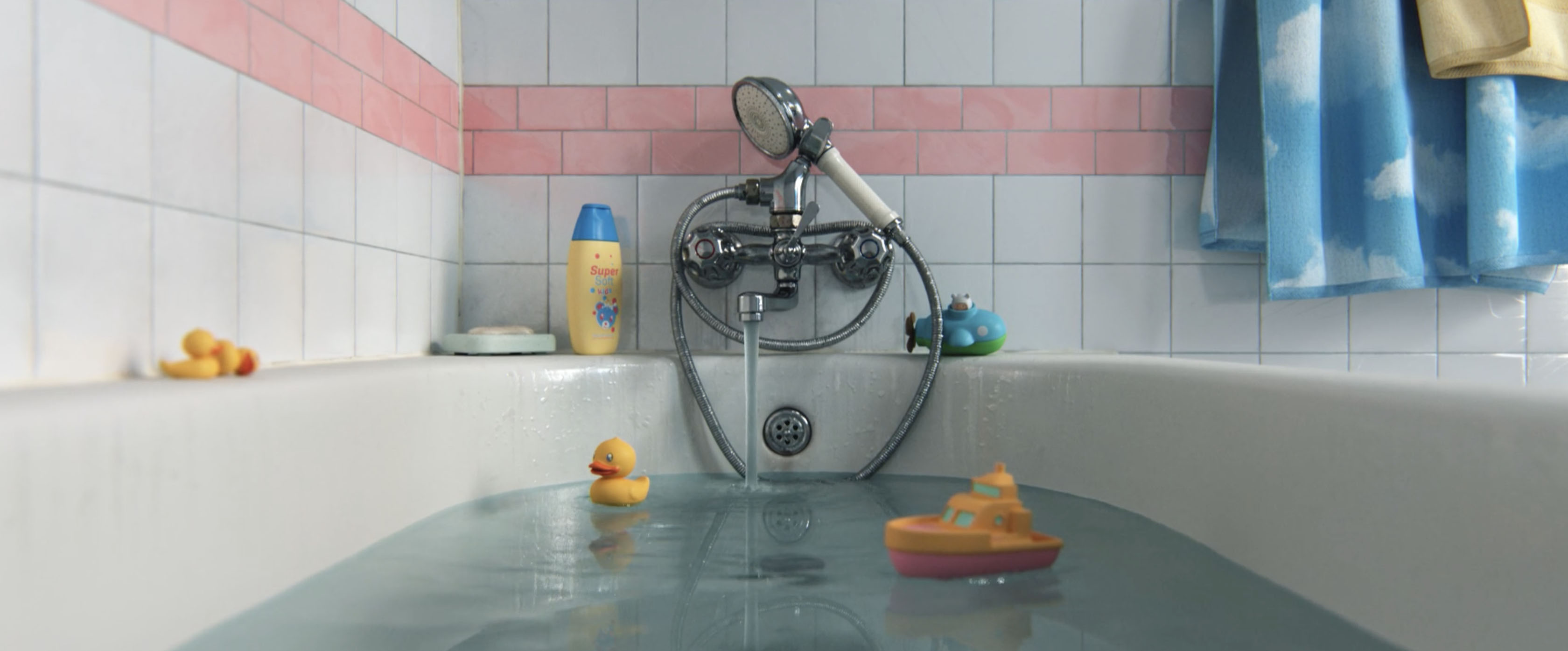
Certain scenes and settings depicted in the short (such as the one at the airport, in the bathroom and the swimming pool) seem particularly compelling and I wondered whether you landed on these completely randomly or if they held a special significance to you.
I’d say that the bathroom is the only scene with a history of some kind. I haven’t lived in a place with a bathtub in years, it’s always a standing shower. And so it was while traveling in Japan, that I got to enjoy a bath for the first time in a while, and it brought back memories from childhood. It was at that moment that I had the idea for the hourglass series of shots, and when the time came to actually model the scene, I tried to imbue it with vague memories of my childhood bathroom.
Tell me about your process (software and tools) and what it takes to achieve this ultra-realistic look in your work.
I always start with collecting a lot of references, sometimes exactly what I’m looking to model, sometimes images that connect with my ideas on a more emotional level. I make these references decks for any scene, or important asset I’m going to work on. Now for the technical process, if I’m working on a large scale environment I start with blocking the general structure of the shot in Cinema4D, and do some quick lighting/clay renders with Octane to get a feeling of where the assets are going to end up living.
I generally try to model everything that I need from scratch because it helps the work feel more personal, and I think it’s also good practice. So based on the references I collected, I model in C4D and sculpt in Z-Brush if necessary, unfold the UVS, and finally paint the models in Substance Painter. At every stage of this process, I place the assets in the shot, and adjust, the model itself of course, but also the lighting and composition of the shot. So while I’m modelling specific objects the actual shot is slowly changing with them.
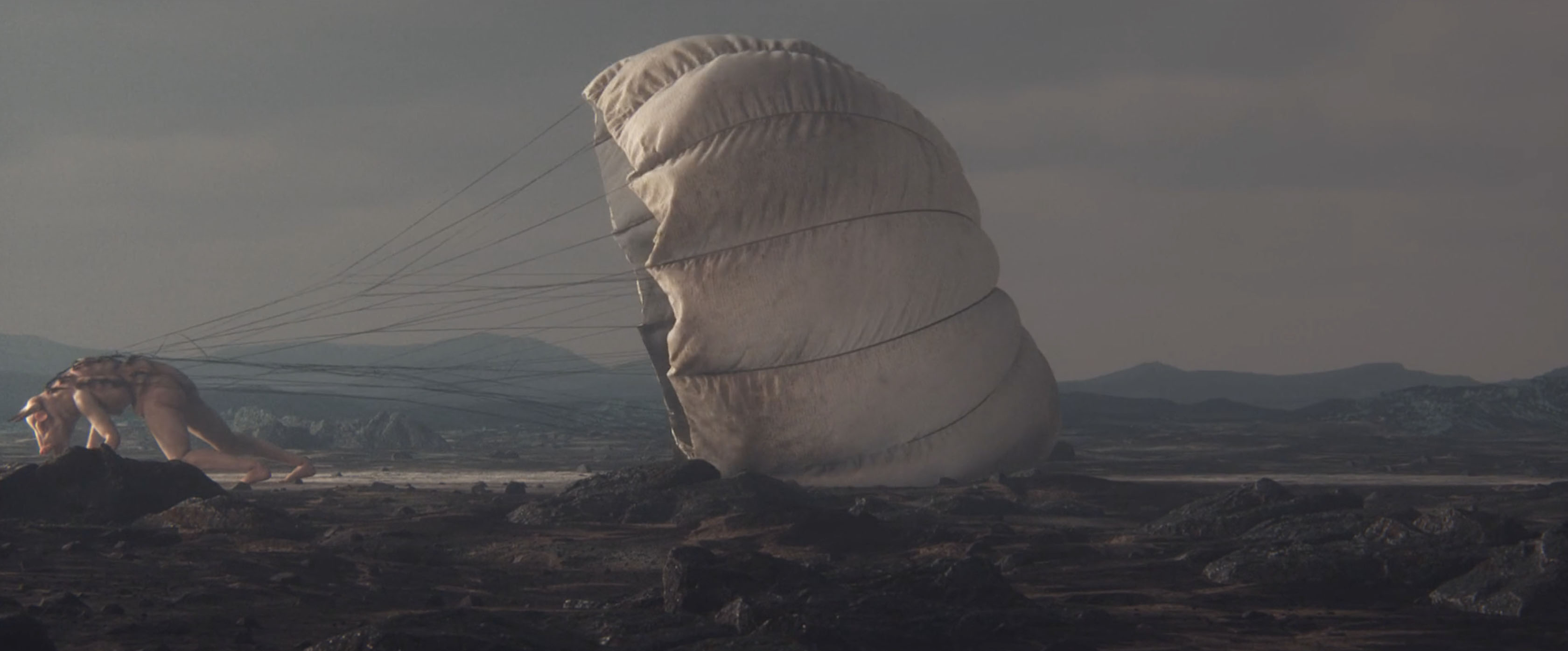
This was a project that you created entirely on your own. What were the biggest advantages of the solo-project and the challenges that you faced?
In my first answer I talked about the free-flowing process I try to maintain while working on these formats, and I think it’s pretty clear that it wouldn’t be very viable if I was working with a team. So I think the biggest advantage is freedom. But on the technical side of things, I’ve also worked hard to learn techniques and pipelines so I can be as self-sufficient as possible. It plays a huge part in me being able to work on projects like these alone, and gives me an opportunity to practice, and learn new things as well.
I find it’s very easy to get disinterested or discouraged and abandon projects when I have to take a month off to make a living.
The biggest challenge is definitely how long it takes. I’m completely independent, so I have to work on top of these projects and maintaining a decent workflow is exhausting. Because the shorts aren’t planned, I find it’s very easy to get disinterested or discouraged and abandon projects when I have to take a month off to make a living.



I’m curious about the minotaur and bird headed characters in the film. Do they represent anything or anyone in particular?
They don’t represent anyone, but they do represent parts of me or aspects of my psyche. The minotaur is grounded, stubborn, strong in a way, and looks for stability which is why in most of the shots it is looking backwards. The bird is more hopeful, yearns for change, and looks towards what’s coming. In the end, neither gets what they are looking for, but that is the nature of things I suppose. Change is inevitable, but it is also slow.
It seems like a brave decision to include a character of yourself and centre the whole film around the negative thoughts rumbling inside you, laying them bare for the whole world to see. What has the response of the audience been so far?
I wouldn’t call it brave for me to show that side of myself to the audience, I really don’t think I can take the credit. I didn’t exactly decide to take the project in that kind of direction, it just sort of happened. It’s only when the time came to release it, that I got a bit worried about how it would be taken, and at that point, I had no choice. But the reception has been amazing, I got a lot of online comments and positive feedback, but even more private messages, from people I know, fellow artists, and complete strangers telling me how much they relate to the story I told and thanking me for putting it out there.
I honestly cannot overstate how touching it has been.

You describe the film’s narrative as the inner struggles of an artist. To me though, it seems more like an intricate representation of a particularly grotesque nightmare. Were you merely trying to exorcise your creative demons or is this in fact a cry for help?
Ha! I don’t think it is either, to be honest. The film strives to be a visual representation of how my mind works, I was looking deep, and into the darkest corners, but the truth is I am a quite happy person despite my mostly grim outlook. Things can always be improved of course, and on most days, working on my mental health definitely feels like a battle, I just don’t think I’m losing.
The film strives to be a visual representation of how my mind works.
What instrument did you learn to play and why did you stop?
I started learning how to play the piano when I was very young, and, as I grew into a teenager, got really fed up with the conservatory teaching method. I was still very passionate about music though and I still played, but I stopped practicing and focused instead on writing my own music, as well as self-teaching how to play bass guitar. I lost touch with that part of me when I got into art school, the amount of work required was too intense, and I started mainly focusing on visual arts.
As I say in the film I still play sometimes, and I love writing and making music for my films. But even though I use them in my work, I can’t say I actually still play either of these instruments, I cannot even read sheet music anymore.
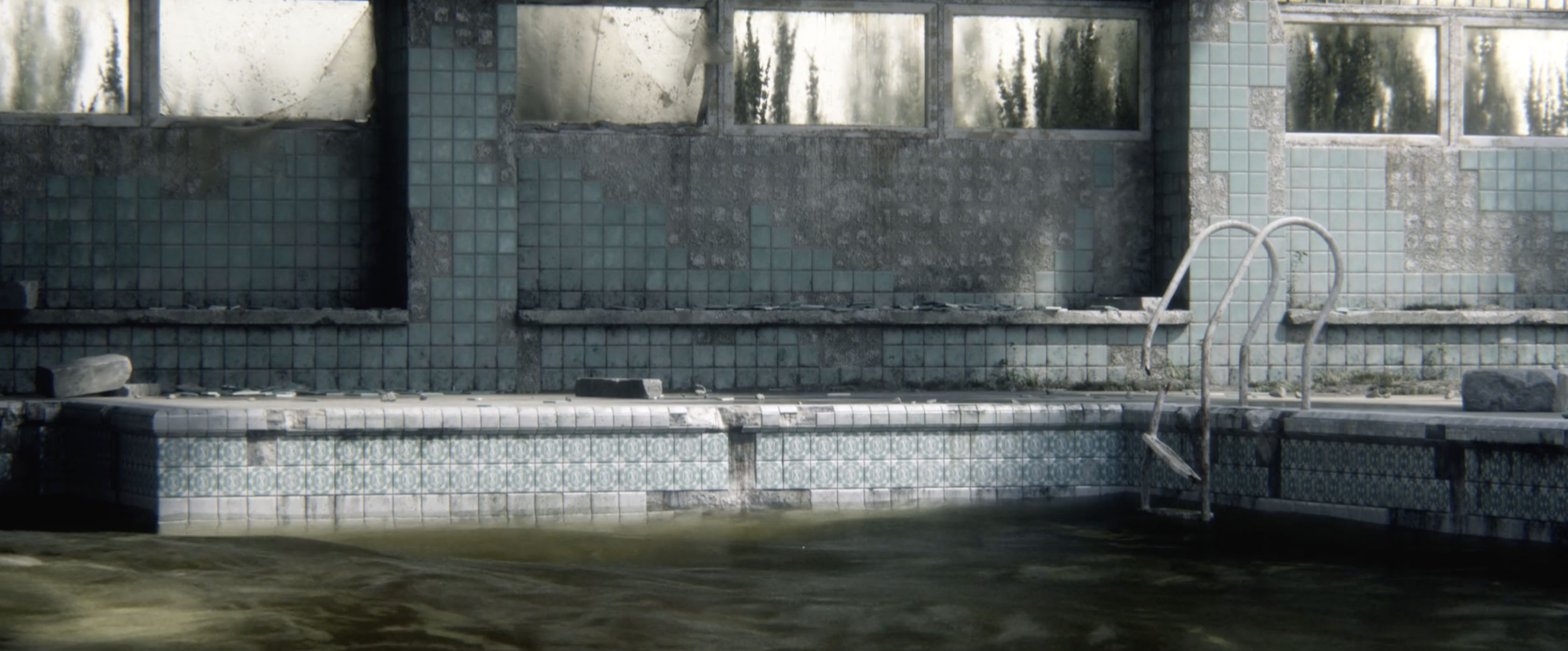
Who inspires you?
Maybe making a list without explaining why is the best way to answer that question, so, in no particular order: David O’Reilly, Ian McKaye, Ryuichi Sakamoto, Liz Harris, Pendleton Ward, Karin Dreijer, Mark Kozelek, Gaspar Noé, Jake and Dinos Chapman, Phil Elverum, Kim Gordon, Cormac McCarthy, Ben Frost, Zdzislaw Beksiński, Kim Laughton, Alejandro Jodorowsky, Saeio, Milan Kundera, Edward Hopper, Francisco Goya, and so so many more.
What’s next?
I cannot say that I know exactly, making this film took over my life for a year and a half. As happy as I am to have made this, it took a lot out of me, and there were times during production where I considered deciding that this would be the last short I’d make. I think I need some time to rest, so I’m mostly planning to work on stills at the moment, being able to just build scenes, and objects without feeling the pressure to turn them into anything should be nice… for a while at least.

